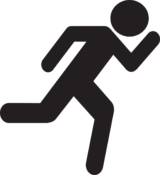10 Ways to Make Your Home More Recovery-Friendly
Whether you’re recovering from surgery, an injury, or simply need a space to recharge, creating a recovery-friendly home can make a world of difference. In this blog post, we’ll explore ten practical ways to transform your living space into a haven of healing. Let’s dive in! 🏡
Table of Contents
1. Declutter Your Space
2. Optimize Lighting
3. Choose Comfortable Furniture
4. Incorporate Greenery
5. Control Noise Levels
6. Enhance Air Quality
7. Improve Accessibility
8. Create a Relaxation Zone
9. Use Technology Wisely
10. Add Personal Touches
1. Declutter Your Space 🧹
A clutter-free environment can significantly reduce stress and promote a sense of calm. Start by organizing your belongings, donating items you no longer need, and creating designated spaces for essentials. This will not only improve your mood but also make it easier to move around your home.
2. Optimize Lighting 💡
Natural light is a powerful mood booster. Ensure your home is well-lit by opening curtains during the day and using soft, warm lamps in the evening. Consider installing dimmer switches to adjust lighting levels according to your needs, helping you relax and recover effectively.
3. Choose Comfortable Furniture 🛋️
Invest in ergonomic furniture that supports your body and enhances comfort. A supportive chair or a well-cushioned sofa can make a significant difference in your recovery journey. Remember, comfort equals quicker recovery!
4. Incorporate Greenery 🌿
Bring nature indoors by adding plants to your living space. Plants like aloe vera, snake plants, and peace lilies not only purify the air but also create a tranquil atmosphere conducive to healing.
5. Control Noise Levels 🔇
Excessive noise can hinder your recovery. Use soundproof curtains or rugs to dampen sound and consider white noise machines or soothing playlists to create a peaceful environment.
6. Enhance Air Quality 🌬️
A clean air supply is crucial for recovery. Use air purifiers and ensure proper ventilation to reduce allergens and pollutants that could impede your healing process.
7. Improve Accessibility 🚪
Make sure your home is easily navigable with clear pathways and accessible storage. Consider installing grab bars in the bathroom or ramps where needed to prevent accidents and enhance safety.
8. Create a Relaxation Zone 🧘♀️
Designate a quiet corner in your home for relaxation and meditation. Include comfortable seating, soft lighting, and calming elements like scented candles or essential oils to soothe your mind and body.
9. Use Technology Wisely 📱
Technology can be a great ally in your recovery. Use apps for guided meditations, virtual therapy sessions, or to keep track of your medications and appointments. However, be mindful of screen time and ensure it doesn’t disrupt your rest.
10. Add Personal Touches 🎨
Make your space your own with personal touches that bring joy and comfort. Display family photos, cherished mementos, and artwork that inspire positivity and healing.
Conclusion
Creating a recovery-friendly home doesn’t have to be overwhelming. By making small, intentional changes, you can craft a nurturing environment that supports your healing journey. Remember, your home is your sanctuary—make it work for you! 🌟
FAQ
Q1: How can I make my bedroom more recovery-friendly?
A1: Focus on comfort with a supportive mattress, blackout curtains for better sleep, and a clutter-free space to promote relaxation.
Q2: What plants are best for improving air quality?
A2: Aloe vera, snake plants, and peace lilies are excellent choices as they are known for their air-purifying properties.
Q3: How can I reduce noise in my home?
A3: Use soundproof curtains, add rugs to absorb sound, and consider a white noise machine to create a peaceful atmosphere.
Q4: What are some technology tools that can aid in recovery?
A4: Apps for meditation, virtual therapy, and medication tracking can be extremely helpful in managing your recovery process.
Q5: Why is decluttering important for a recovery environment?
A5: A clutter-free space reduces stress, improves mood, and makes it easier to move around, which is essential for effective recovery.

